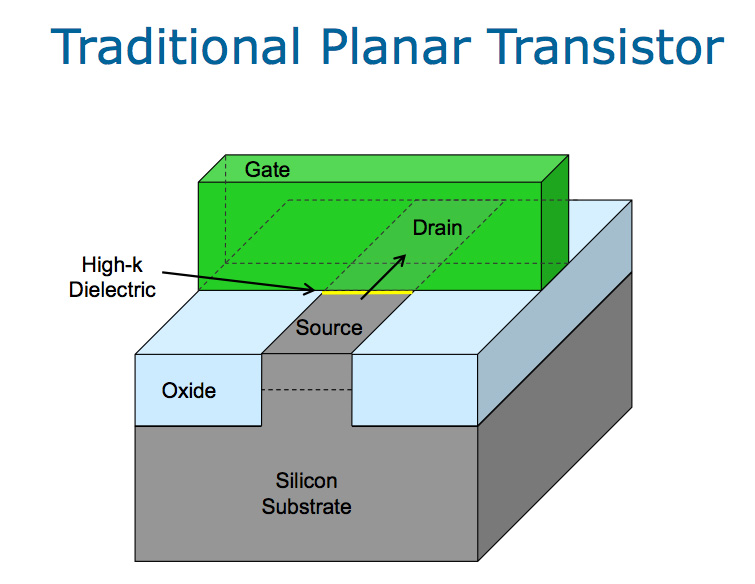Planar FET nano-transistors and the performance of nano-wires in its structure (based on nano-micro-PHD electronics doctorate)(educational-research doctorate)
Researcher and author PhD student : Afshin Rashid
Note: Planar FET nano-transistors have a flat structure, which is basically made up of three components: an emitter, a collector, and a base or gate, which controls the flow of electrons between the two by means of nanowires.
Planar FET nano-transistors in a thin nano-layer under the gate, called the inversion layer, are responsible for the total flow of electrons, and a tiny nano-wire behaves between the two poles of an electrical outlet. This was not a problem when transistors measured 180 nanometers or more, but as they got smaller, the inverted nano-layer became narrower and narrower and less efficient. As a result, even when the transistor is off, more energy and current flows between the current collector and the collector, and the voltage difference between the two modes is smaller.
By reducing leakage gateway through technologies such as nanowires Nano wire broke through simple voltage of the gate, the more electrons have to pass nano inversion layer is, the problem of voltage difference in the nano-transistors Planar FET reduce and As a result, a much larger contact area and better control of the flow of electrons are created. Because there are now three points between the nano-layer inversion and the contact gate of the Planar FET nanoparticles , nanoparticles based on Planar FET nanotechnology , even if the logic function is the same, make contact with a single gate at three points. Slow down.
Conclusion:
Planar FET nano-transistors have a flat structure, which is basically made up of three components: an emitter, a collector, and a base or gate, which controls the flow of electrons between the two by means of nano-wires.
Author: PhD Student ( Afshin Rashid)



